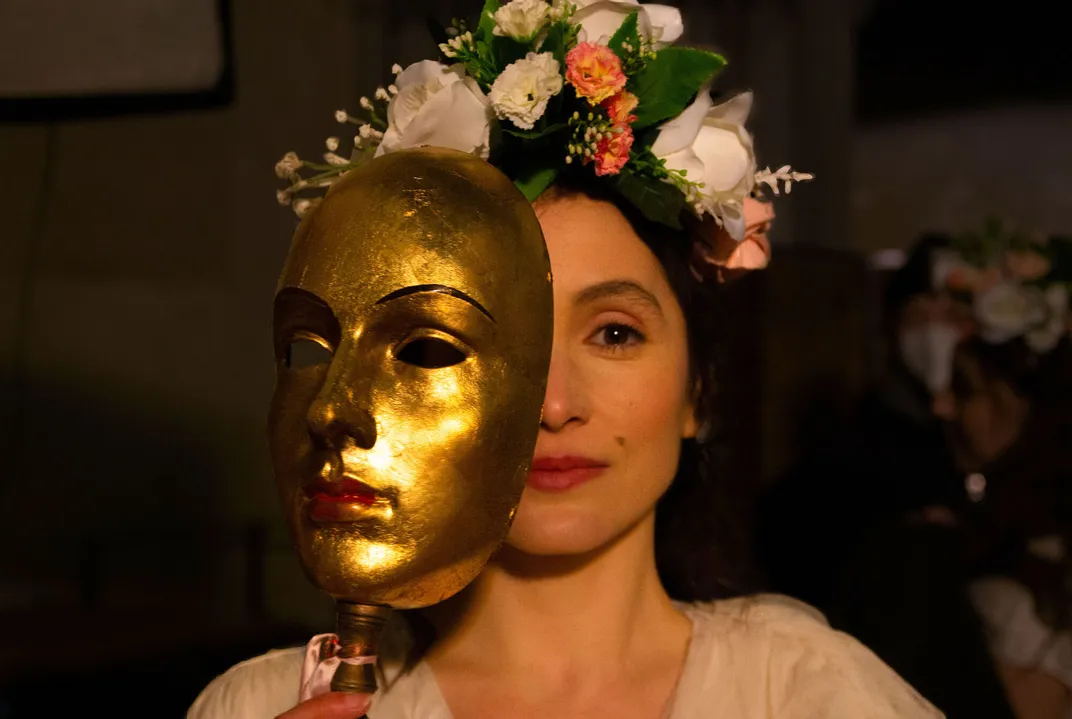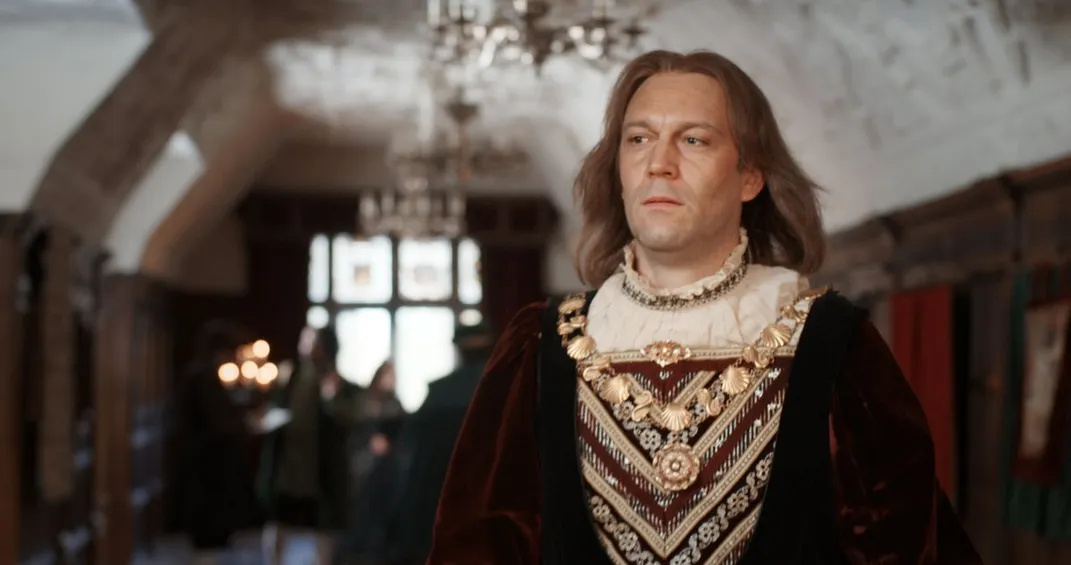The Rise and Fall of Tudor England’s Scandalous Boleyn Family
A new documentary offers a more sympathetic view of Henry VIII’s second wife, Anne Boleyn, and her inner circle
:focal(396x171:397x172)/https://tf-cmsv2-smithsonianmag-media.s3.amazonaws.com/filer/2b/4c/2b4ccd13-f894-4fe6-a6c5-1dbee843d026/anne_and_mary.jpg)
When Anne Boleyn, the worldly, charismatic daughter of a leading English courtier, caught the eye of Tudor king Henry VIII in the mid-1520s, few could have foreseen just how far she would rise—and, eventually, fall.
Crowned queen in 1533, Anne succeeded in ousting her predecessor, Catherine of Aragon, from the throne, ascending to England’s highest echelons against all odds. But just three years later, she was dead, beheaded by the very man who’d defied the Catholic Church and centuries of precedent to make her his wife. Her beloved brother, the roguish poet George, died on the scaffold two days before her, charged of incest with his sister and scheming to kill the king. And so the Boleyns’ meteoric rise to power came to an abrupt, ignominious end.
“The Tudor public [was] used to the falls of kings and princes but even they might not have imagined a fall as graphic as that of the Boleyn family,” scholar Nandini Das tells the Sun’s Josh Saunders.
A new, three-part documentary from BBC Two revisits the polarizing queen’s story from her family’s perspective, offering a more balanced portrayal of the Boleyns through a blend of dramatic reenactments and interviews with leading historians. Titled “The Boleyns: A Scandalous Family,” the series is available to watch on BBC iPlayer. Viewers in the United States can also find the first episode on YouTube.
“There’s a thin line between great ambition and lunacy,” Gareth Russell, one of the historians featured in the documentary, tells the Daily Mail’s Nicole Lampert. “To understand Anne's rise and fall you need to know about her power-hungry family. They’re an extraordinary example of hubris and pain.”
The documentary’s rich cast of characters includes Anne and her two siblings, George and Mary; her parents, Thomas and Elizabeth; and her maternal uncle, Thomas Howard, the powerful duke of Norfolk. Exactly when the Boleyn children were born is unknown, but most historians agree that Mary, who served as Henry's mistress prior to her sister, was the oldest of the three.
Though contemporary observers tend to paint Thomas Boleyn as a “callous, grasping courtier who would stop at nothing to advance his own interests,” recent research has allowed for a more nuanced understanding of his actions, wrote Lauren Mackay, author of Among the Wolves of Court: The Untold Story of Thomas and George Boleyn, for History Extra in 2018.
Thomas came from a family of self-made men and rose through the ranks by continually demonstrating his political prowess. At the same time, he ensured that his children—including, unusually, his daughters—received a world-class education that enabled them to stand out at court.

“Anne was someone who, on her worst day, was Henry’s intellectual equal,” Russell tells Radio Times’ Kelly-Anne Taylor. “On her average day, she was more intelligent than him. She was educated in France; she had some experience at the Habsburg Court. … She had chic European glamor and great confidence.”
A charge often leveled at Thomas is that he forced his daughters into the king’s bed to secure his own advancement. But as Owen Emmerson, a historian at the Boleyn family seat of Hever Castle, argues for History Extra, this view reduces Anne to “the hapless victim of her father’s ruthless ambition [rather than] a woman prepared and able to carve out her own destiny.” Mackay further points out that Thomas “intended his daughter to become an imposing woman in her own right, poised to take a prominent place at the English court. He did not raise her to share the king’s bed—she deserved better than the life of a royal mistress.”
Despite their possible reservations regarding the sisters’ entanglements with the king, the Boleyns worked tirelessly to capitalize on Henry’s interest in the family. Thomas and his brother-in-law, the duke of Norfolk, advised Anne on how best to maintain the king’s attention, reaping the benefits of their proximity to power in the process. In 1529, as Henry pursued a divorce from Catherine of Aragon, he elevated Thomas to the peerage, granting him the title Earl of Wiltshire and Ormond. Other favors followed as the family’s stature at court grew.
Anne’s 1533 wedding and coronation marked the apex of the Boleyns’ ascent. But the queen’s position grew precarious after she, like the king’s first wife, failed to give birth to a long-awaited male heir. Tiring of Anne’s vivacious personality, which he had found so alluring during their courtship, Henry ordered his wife’s arrest on contrived charges of adultery, incest, witchcraft and conspiring to kill him. George, who’d always enjoyed a close relationship with his sister, stood accused of incest with her.

Meanwhile, the siblings’ father and uncle escaped the brunt of the king’s ire. Though Thomas briefly fell from favor, he was soon back at court, where he continued to serve Henry until his death in 1539. Norfolk stayed in the king’s good graces by presiding over his niece and nephew’s May 1536 trials. Both were found guilty and sentenced to death.
“The Boleyns” deftly traces the family’s tragic tale, offering a more sympathetic view of oft-criticized historical figures like Thomas and bringing new perspectives to a well-trodden story.
“So much of the [Boleyns’] history is unknown to us,” writes Emmerson for History Extra. “… This vacuum of knowledge about their lives has enabled us to craft wildly divergent versions of their tale, and stories about their lives are as popular today as they have ever been.”
The historian adds, “Before Anne’s dazzling eyes were blindfolded to spare her the horror of glimpsing the sword that was to kill her, she asked the crowd who had gathered to watch her demise to ‘judge the best’ should they seek to understand her story. The BBC’s latest version of the ever-fascinating Boleyns not only does Anne’s story justice, but it also restores the reputations of her astonishing family too.”
/https://tf-cmsv2-smithsonianmag-media.s3.amazonaws.com/accounts/headshot/mellon.png)


/https://tf-cmsv2-smithsonianmag-media.s3.amazonaws.com/accounts/headshot/mellon.png)